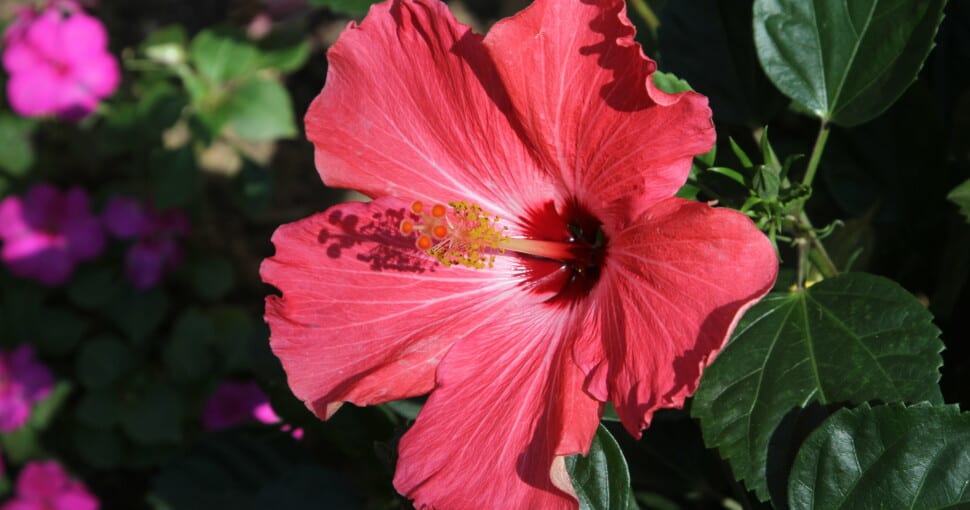The hibiscus plant is a beautiful flowering shrub that produces bright flowers that often last only a single day. The two main hibiscus varieties are the Chinese hibiscus (Hibiscus rosa-Sinensis) and the East African hibiscus (H. schizopetalus).
Contents
- 1. Silky Camellia (Stewartia Malacondrendon)
- 2. Franklin Tree (Franklinia Alatamaha)
- 3. Sweet Bay Magnolia (Magnolia Virginiana)
- 4. Chaparral Bush Mallow (Malacothamnus fasciculatus)
- 5. Norfolk Island Hibiscus (Lagunaria patersonii)
- 6. Belladonna Lily (Amaryllis belladonna)
- 7. Canna Lilies (Cannaceae Canna)
- 8. Marsh Afrikaner (Gladiolus tristis)
Hibiscus flowers are big and lobed, with the stamens fused into the flower tubes. Hibiscus plants usually grow about 15 feet high. The flowers are often red, white, yellow, or orange. Several other plants closely resemble hibiscus plants and flowers, including:
- Silky camellia – the flowers have a similar shape to hibiscus flowers
- Franklin tree – the white flowers and stamens resemble that of hibiscus flowers
- Sweet bay magnolias – the flowers are the same size as hibiscus flowers
- Chaparral bush mallows – the flowers look remarkably similar to hibiscus flowers
- Norfolk Island hibiscus – the flower structure is similar to hibiscus flowers
- Belladonna lilies – similar flower structure to hibiscus
- Canna lilies – the flowers look like hibiscus
- Marsh Afrikaners – the flowers look similar to hibiscus flowers
Despite the beauty of a hibiscus plant, some people prefer not to have invasive species in their gardens. So, if you want a plant that resembles hibiscus flowers, see below for the similarities and differences between the following plants and hibiscus.
Related: Are Hibiscus Plants Poisonous?
1. Silky Camellia (Stewartia Malacondrendon)
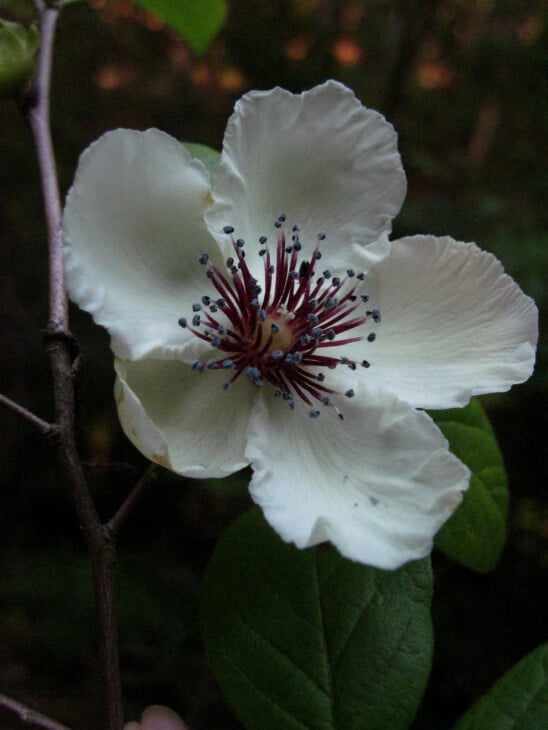
Silky camellias are a Native American alternative to hibiscus plants. The silky camellia usually grows between 10 and 18 feet tall, roughly the same size as a hibiscus shrub. Silky camellias have showy, white flowers with five petals that resemble hibiscus flowers.
The flower petals are slightly crinkled, and the stamens protrude from the center like a hibiscus. Silky camellias also have blue anthers that protrude from the flower, which sets them apart from the hibiscus flower.
The plant’s leaves also look different since they have smooth edges and not the serrated ones of a hibiscus. Silky camellias are a great alternative to hibiscus shrubs, but they also make excellent companion plants for the hibiscus.
Related: Plants That Look Like Camellia
2. Franklin Tree (Franklinia Alatamaha)
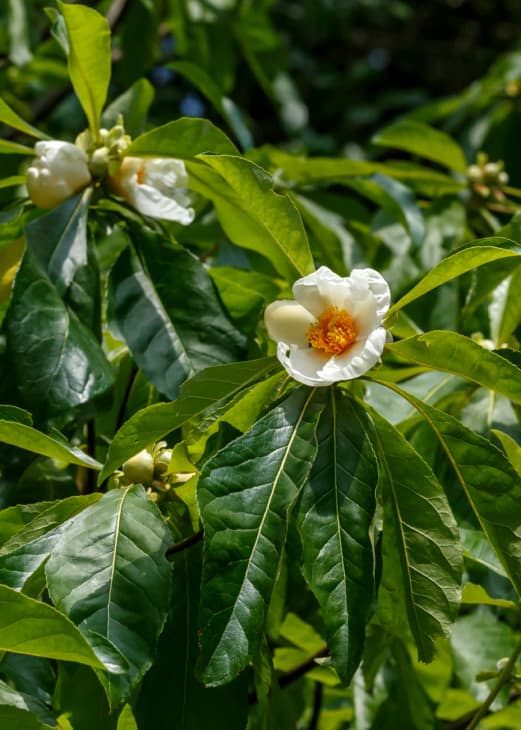
The Franklin tree also produces flowers that look like hibiscus flowers. Franklin trees are native to America but have been extinct in the wild for some time. You can still find and propagate them in your garden. Franklin trees grow up to 20 feet tall. They produce large white flowers with 5 petals.
The yellow stamens protrude from the flowers, making them look like hibiscus. The soft, wavy flower petals also remind one of a hibiscus flower. But Franklin tree flowers have yellow anthers surrounding the stamen, a characteristic not found in hibiscus flowers.
The leaves of a Franklin tree also look vastly different from a hibiscus shrub. They are long, glossy, and much larger than hibiscus leaves.
3. Sweet Bay Magnolia (Magnolia Virginiana)
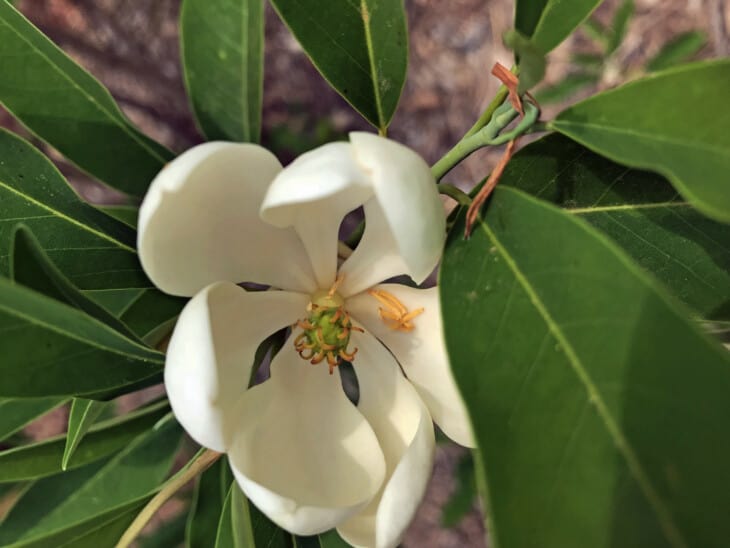
Sweet bay magnolias can be shaped like trees or shrubs. When kept as shrubs, the plant resembles hibiscus shrubs when in bloom. Sweet bay magnolia flowers are large, showy, and delicate, a characteristic they share with hibiscus flowers. They have creamy white flowers with yellow stamens.
The flowers have cupped petals and adorn 9 to 12 petals on each flower, much more than a hibiscus flower. Sweet bay magnolia flowers also have a large, protruding stamen, like a hibiscus flower. Yet, where the hibiscus’s stamen disappears into a tube, the sweet bay magnolia’s stamen ends bluntly in the center of the flower.
The leaves of a sweet bay magnolia also differ from a hibiscus. They are longer and glossier than hibiscus leaves, with smooth edges instead of the dark green serrated ones of the hibiscus plant.
Related: When Are Magnolias In Season? | 6 Trees Similar To Magnolia
4. Chaparral Bush Mallow (Malacothamnus fasciculatus)
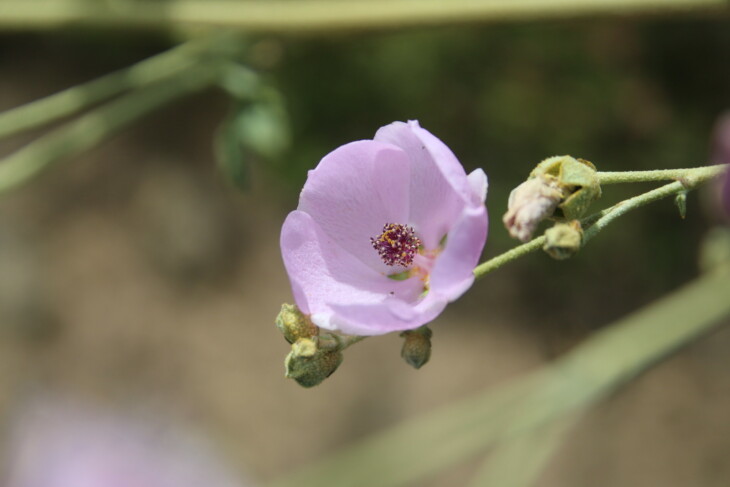
Chaparral bush mallows are also native to America and produce flowers with a candid likeness to hibiscus flowers. The chaparral bush mallow grows up to 16 feet tall and produces pale pink flowers with 5 petals, just like a hibiscus flower. The flower petals are translucent and delicate and form a cup around the stamen.
The pink and yellow stamen protrudes from the center of the flower, just like that of a hibiscus. Despite the canny resemblance between the flowers, a chaparral bush mallow shrub looks quite different from a hibiscus shrub. The leaves are flat, round, and sometimes lobed.
Most of the plant is covered in white or brown hairs to make it look fluffy. From a distance, the white hairs make the leaves appear silver, which gives the chaparral bush mallow a distinctive look and sets it apart from a hibiscus plant.
5. Norfolk Island Hibiscus (Lagunaria patersonii)
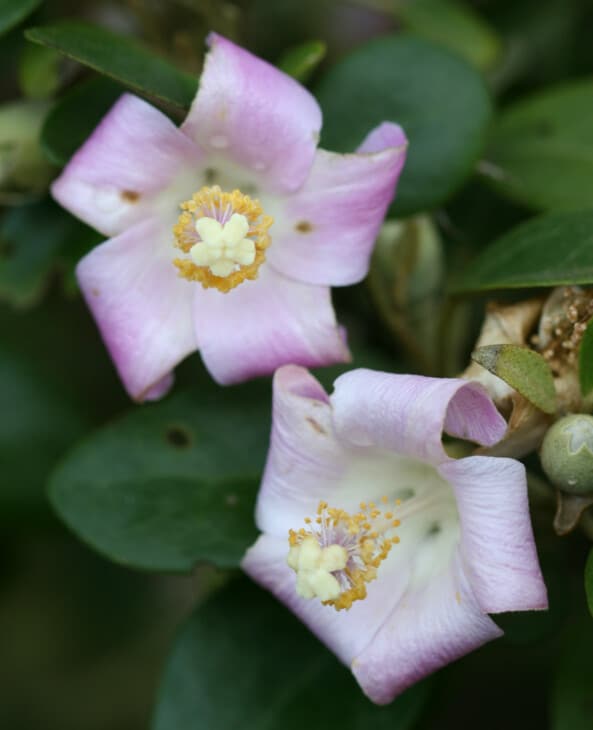
The Norfolk Island hibiscus may have the word hibiscus in the name, but it is not a true hibiscus plant. These trees are native to Australia and grow about 25 feet tall. The Norfolk Island hibiscus tree produces large pink flowers that look like hibiscus flowers.
These 5 petaled flowers have delicate, slightly crinkly petals. Their pink petals lighten towards the center, where they disappear into a tube. A yellow stamen appears from the tube, making the Norfolk Island hibiscus look like a true hibiscus plant. Still, there are some differences between these plants.
The flowers have a different shape. Instead of rounded petals, each petal has a sharp edge. The flower looks more like a star than hibiscus flowers. The tree is also quite different from a hibiscus shrub, as one can see when looking at the long, dark green leaves.
6. Belladonna Lily (Amaryllis belladonna)
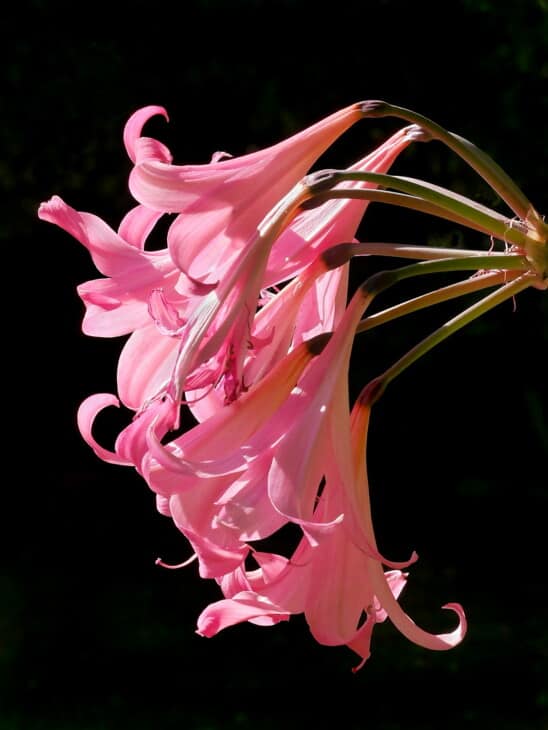
Belladonna lilies (or naked lilies) are native to South Africa and produce flowers one can easily compare with hibiscus flowers. These delicate flowers with yellow stamens look a lot like hibiscus flowers. Each flower has 6 petals that disappear into a tube at the flower’s base.
From the tube, several long, yellow stamens with brown tops protrude. Belladonna lilies come in many colors, including pink, red, and white. Although the flowers look similar, there are many differences between hibiscus shrubs and belladonna lily plants.
Belladonna lilies are bulbs that grow about 3 feet tall. They have few leaves, which are straight and narrow, and come directly from the plant’s base.
7. Canna Lilies (Cannaceae Canna)
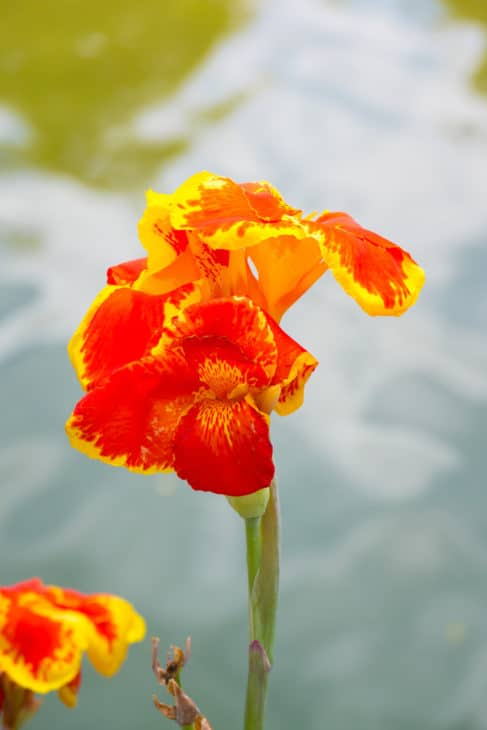
Canna lilies are native to central and South America, where they flourish and produce the most beautiful flowers. These delicate flowers have long, droopy petals and prominent stamens protruding from a tube in the middle of the flower. Each flower has 4 petals, and the flowers resemble hibiscus quite closely.
Canna lilies come in too many color variations to name. While the flowers look like hibiscus flowers, the plant itself looks different. Canna lilies often grow up to 6 feet tall. The leaves and stems have a glossy appearance. The huge, broad leaves come directly from the plant’s base.
The leaves are long, and their veins are prominent. Canna lilies are a great alternative to hibiscus shrubs for those living in wet, tropical areas.
8. Marsh Afrikaner (Gladiolus tristis)
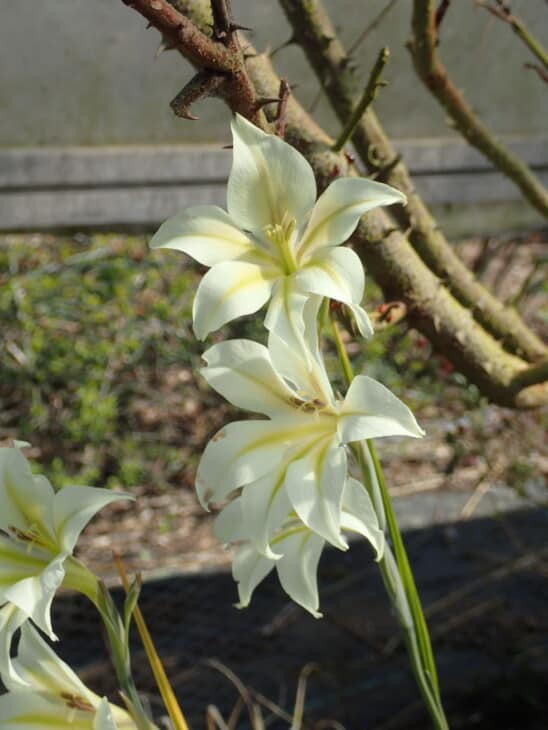
The marsh Afrikaner is native to Southern Africa and produces flowers that also resemble hibiscus flowers. Each flower has six petals that droop slightly. From the center of the flower, a long, prominent stamen appears. This makes the marsh Afrikaner look like a hibiscus flower.
Marsh Afrikaners come in different colors. Their stamens are primarily green, and the flowers have a dark line down the center of each petal. The marsh Afrikaner plant grows up to 3 feet tall, and the flowers grow directly on the stem.
Marsh Afrikaners have few leaves, and the leaves they do have are long and thin, looking nothing like hibiscus leaves. Still, when the marsh Afrikaner is in full bloom, the flowers can remind one of the large, crinkly hibiscus blooms.

